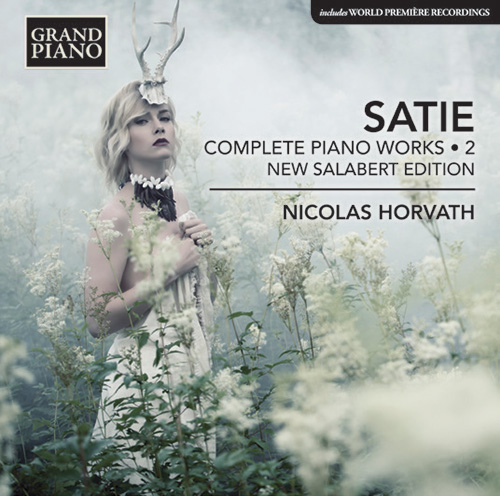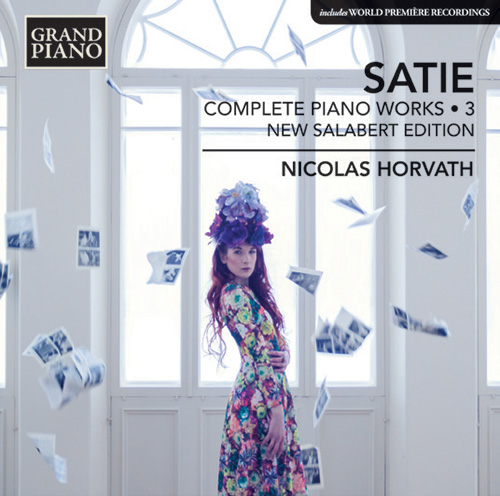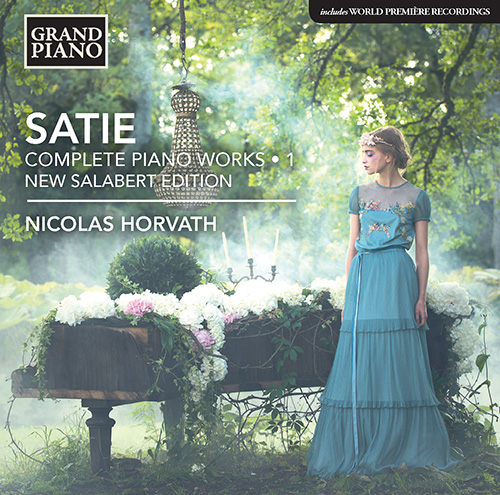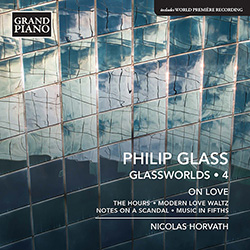
ERIK SATIE (1866–1925)
COMPLETE PIANO WORKS • 1
NEW SALABERT EDITION
NICOLAS HORVATH
“My first ever non-stop marathon performance of Satie's piano music took place in Honfleur and Perpignan back in 2011. It signalled the beginning of a long journey, since when I have worked closely with the most important Erik Satie experts on a very special project: to capture the spirit of Satie's music as it would have sounded in his day.
Approaching Satie's complete piano oeuvre in chronological order, I recorded the first few volumes of this new cycle on an 1881 Érard piano. This survey of the urtext edition of Satie's music contains world premières of both newly discovered and recently corrected works, enhanced by in-depth musical analysis; a thoughtful biography containing recent additional material by Robert Orledge; plus a comprehensive iconography with rarely seen or unknown examples chosen by Ornella Volta.” – Nicolas Horvath

About this Recording
Always inventive and innovation-seeking, Erik Satie’s earliest works show traces of Chopin as an influence but he soon came to reject virtuosity and tradition, choosing instead to remain with the quintessentially French traits of clarity, precision, elegance and economy. Satie’s hauntingly beautiful floating melodies and modal tonalities are unforgettably compelling, combining bygone classical ages with Parisian sophistication. This landmark recording uses both a new and corrected edition of Satie’s music and Cosima Wagner’s own 1881 Erard piano, Satie’s instrument maker of choice.
French liner notes available for download on the album page.
«FILS DES ÉTOILES» (1891) ** (04:15)
OF REVISED EDITION BY R. ORLEDGE
(EDITIONS SALABERT, 2016)

NICOLAS HORVATH
Recognized as a leading interpreter of Liszt’s music, Nicolas Horvath has in recent years become one of the most sought after pianists of his generation. Holder of a number of awards, including First Prize of the Scriabin and the Luigi Nono International Competitions, he frequently organizes events and concerts of unusual length, sometimes over twelve hours, such as Philip Glass’ complete piano music or Erik Satie’s Vexations, and composers from a number of countries have written for him. Nicolas Horvath is a Steinway artist.
COMING SOON


– Scene Magazine








